I am convinced that a new ethics will appear someday. A bit like the way kids think. They do not distinguish between more and less valuable life. Grandma died, the cat died, the hedgehog got run over by a car – it is one thing in the child’s worldview. Quite simply: life has gone. I think the future ethics will be just as uncompromising.
Svetlana Alexievich
Zielona Góra Biennale 2022
Renewal
14 October – 13 November 2022
The Zielona Góra Biennale 2022, titled Renewal, is the second edition of an artistic event that reactivates a local tradition of cyclical exhibitions, started by the Golden Grape Exhibitions and Symposiums (1963–1981) and continued by the New Art Biennale (1985–1996). The Renewal programme invites imagination work to recreate the broken ties connecting people with the Earth. It is also a proposal to revise the patterns of social coexistence that are deadly for the planet and humanity. In search of the sources of the myth of the earthly community, the participants of the Biennale venture beyond the areas of socially agreed reality and rationality. Assuming that the present world has to be said goodbye to and dreamed up again, they transform archetypes, collective dreams, and the unconscious in their art, and also reach for fantasies, utopias, and erased minority herstories.
The Renewal programme comprises exhibitions and artistic works hosted by various institutional venues and public spaces in Zielona Góra, as well as a community scene produced during the Biennale.
We have woven the scattered narrative of the exhibitions loosely from works that bring out various aspects of the myth of the earthly community. This story is inspired by ecological thinking, which means that it creates an ecosystem in which all elements and processes – including those marginalized and seemingly unrelated – are complex and interact with each other. Every cell, organism and organization, house, street, city, planet is connected and important in this perspective. From this point of view, the state of the climate is related to social and economic justice, and the quality of life of a community depends on the status of its minority and feminized care work. Individual mental health, on the other hand, resonates not only with climate mourning, but also with technocapitalism or the patriarchy’s still living heritage.
One of the leading themes around which we have developed the concept of Renewal takes up a dialogue with Bohaterów Westerplatte Street, the main artery in Zielona Góra, connected with a stately, “heroic” square, whose history is related to military operations and representation of power. In relation to the values encoded in these places, we build a mythology of contemporary heroism. We negotiate which people and species can be present, visible, and commemorated in the public sphere. We shift the focus to life as such and resources that support survival. We look for them in unspectacular everyday practices, care, relationships, attention to oneself and others. We focus on feminized competencies developed in the experience of caring and working in households, as well as in social commitment. We find our roots in the Earth and in our female ancestors. We make public the memory that does not fit in the still dominant patriarchal and national histories. We extend the social and urban ecosystem to the relationship with the Earth, our common home, relating the time and quality of human life to ideas about natural cycles and phenomena: rooting, growth, nutrition, flourishing, decay, renewal.
Curatorial team:
Marta Gendera, Joanna Sokołowska (exhibition)
Bartek Lis (public programme)
Interviews and field research:
Olga Drenda
The community scene is built around several important categories:
accessibility – during the Biennale, both as part of the main exhibition programme and as part of educational and community projects, we look for the meanings of the idea of accessibility. We will reflect on the democratic and communal nature of the city. To what extent are multiple/possible ways of thinking, sensitivity, motor skills and sensuality manifested in urban spaces, in its showrooms and main “catwalks”? Is Zielona Góra a city for everyone or for “heroes” only? What if you are 87 years old, or in a wheelchair, or deaf, or psycho-sexually non-normative?
adding history / visualizing the invisible – writing and reading the city. If we more often doubt this democratic and universal nature of the community, then maybe after such a diagnosis it is worth preparing for small revolutions, tiny about-faces, and bold re-arrangements? There have been more narratives and stories (written with words, body, movement, singing) than the official discourse wants to convey to us. That is why we are getting down to workshop-writing the history of Zielona Góra, which has not existed, was not there, or which has simply been erased or forgotten. As part of Antek Kurjata’s and Katarzyna Żeglicka’s performance workshops, we will mark the city space with non-normativity, and the group working with Marta Konarzewska will write their own history (herstory) of Zielona Góra, where queers, trans, and non-binary people will feel at home. Anew.
regaining the city for cultural minorities, physically non-normative persons, queers, Deaf people, ecologists, and seniors – Zielona Góra was (and is) written every day. By a mother taking her children for a walk, an elderly man’s peregrinations in search of a cheaper pair of shoes, by gossip and laughter exchanged by Sveta and Yevgeniy, two Ukrainian people with refugee experience, or by a walk of the students of the local University of the Third Age, who know the history of this street better than many historians: the first shopping centres, doctors, cafés, tailors, and hairdressers. Recalling these narratives (smaller stories) as part of senior meetings is a symbolic regaining of this space by neighbours, citizens of Zielona Góra.
looking for the green and natural – is it possible to feel green in a concrete city of hot gusts of wind, scorching benches, and fleeing shadows? Our guides will help us find trees, vegetation, and animals in the urban jungle (or perhaps the utopia of the garden city).
sensuality and a journey beyond the dogma of visuality – in spite of the visual arts, we will try to celebrate art without looking at it. Blindfolded, it will be easier to hear different stories, see the meanings and problems. Sometimes a good story, an audio description, an association with aromas, textiles, haptics is enough. Temporarily not looking at art democratizes it for people who are blind, partially sighted, tired of looking, afraid of art with a capital “A.” Appealing to senses other than sight sometimes helps to understand. Sensual workshops and guided tours will allow the blind to see and the frightened to become familiar with contemporary art.
In the programme:
– subjective guided tours of the exhibition for those interested, including sight- and hearing-impaired persons;
– thematic walks in the footsteps of a green city, following the tracks of utopia, plants and animals;
– a herstorical and historical walk down Bohaterów Westerplatte Street, designed by seniors;
– a “blindfolded” walk down Bohaterów Westerplatte Street, i.e. without looking. What do you see? What do you hear?
– sensory “blindfolded” exhibition workshops – without looking;
– queerstorical workshops for all those wishing to (re)write the his/herstory of Zielona Góra;
– performative movement workshops for all, including persons with disabilities.
public programme curator:
Bartek Lis
Organised by
Uniwersytet Zielonogórski, Instytut Sztuk Wizualnych
BWA Zielona Góra
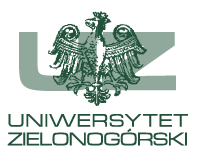

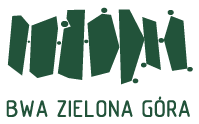
Partners:
Muzeum Ziemi Lubuskiej, Filharmonia Zielonogórska, Planetarium Wenus, Wojewódzka i Miejska Biblioteka Publiczna w Zielonej Górze, Centrum Biznesu, Fundacja Salony, Fundacja Tłocznia, X-Demon, Cafe Noir Zielona Góra, Brandenburgisches Landesmuseum für moderne Kunst


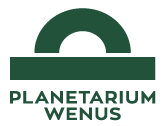

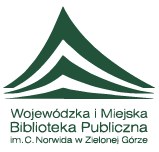


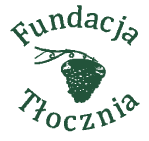



Supported by:
Institute of Visual Arts of the University of Zielona Góra, City of Zielona Góra, Foundation for Polish-German Cooperation, Zoom Europa – Cultural Association for Central and Eastern Europe
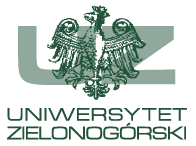

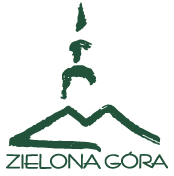
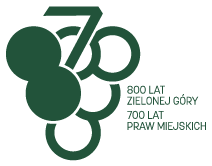

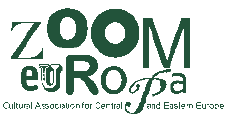
Wysta
The exhibition under the patronage of the Rector of UZ, Prof. Wojciech Strzyżewski
Production:
Karolina Spiak
Production cooperation:
Kacper Będkowski, Małgorzata Dobrucka and volunteers: Natalia Borończyk, Joanna Glapka, Marta Karkut, Angela Kąpielska, Oliwia Kaźmierczak, Julia Kleszcz, Agnieszka Kowaliczek, Daria Kulik, Martyna Mazur, Urszula Piątkowska, Agnieszka Piskorska, Patrycja Pustelny, Karol Sokołowska, Zofia Stawicka
Exhibitions realization:
Tomasz Relewicz & Galeria Technik: Bartek Buczek, Maciej Skobel, Maciej Zimmer, Łukasz Adamowicz
Visual identification:
DWA Graphic Design Department (Karolina Pietrzyk, Gilbert Schneider, Tobias Wenig)
Website:
Bureau Castel
Texts editing:
Jolanta Chrzanowska-Pieńkos
Translation:
Marcin Wawrzyńczak
Acknowledgements:
AKINCI, Amsterdam; andriesse eyck galerie, Amsterdam; Archiwum Państwowe w Zielonej Górze; BWA Warszawa; Danuta Chałat, Eigen + Art, Lipsk; Galeria Continua, San Gimignano; Galeria Bielska BWA, Bielsko-Biała; Galeria Monopol, Warszawa; Galeria Szara, Warszawa; Gandy Gallery, Bratysława; Ivan Gallery, Bukareszt; Jiri Svestka Gallery, Praga; KTBS Zielona Góra; Lokal_30, Warszawa; Piktogram, Warszawa; Slovenský inštitút; SVIT, Praga; East Slovak Gallery, Košice; Zielonogórska Spółdzielnia Mieszkaniowa












